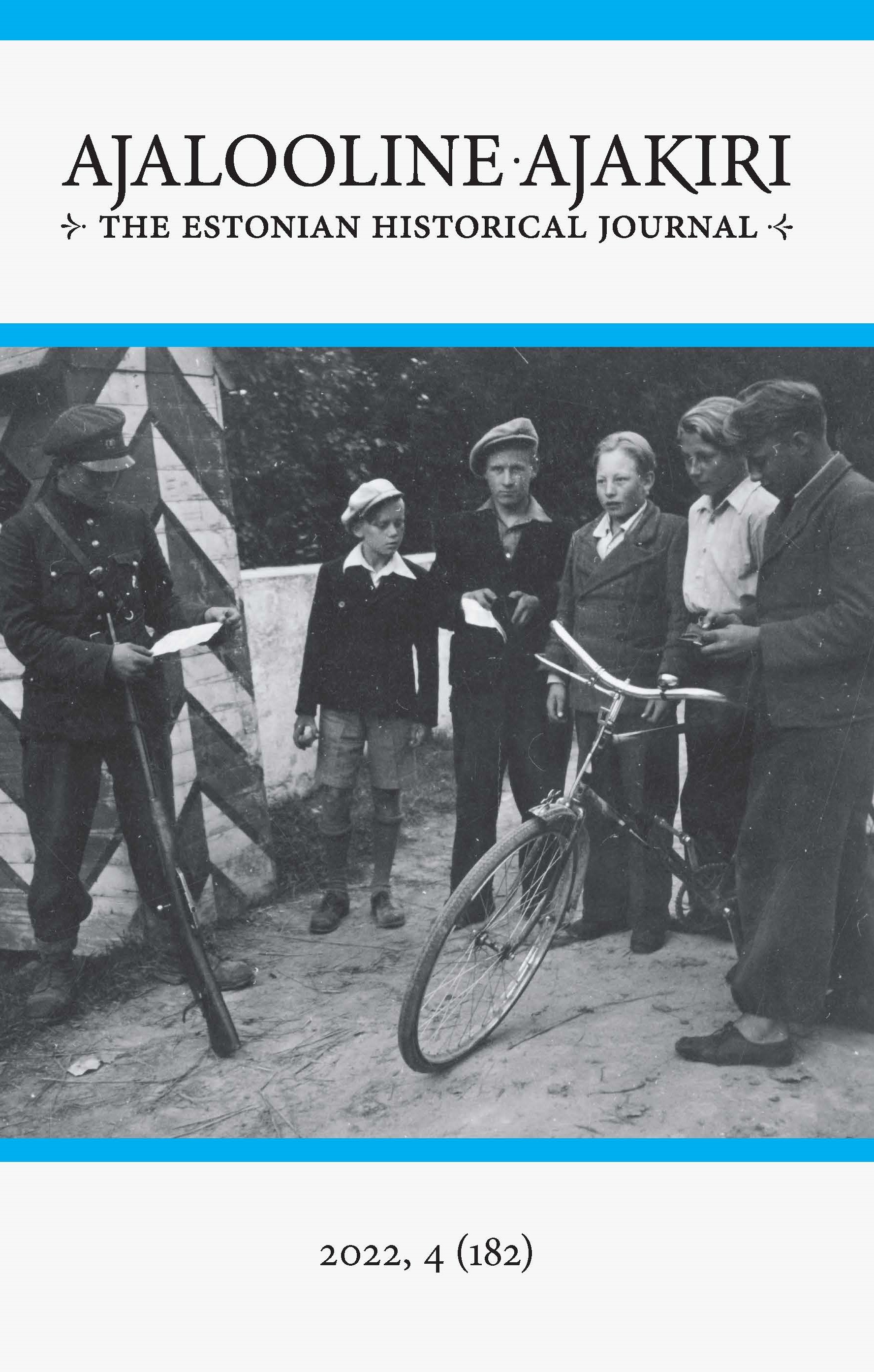Balti naissnaiprid Gruusia-Abhaasia ja Tšetšeenia sõdades / Women Snipers from the Baltic States Fighting in the Georgian-Abkhazian and Chechen Wars
Vene sõdurilegendi funktsioonid ja ajaloolised juured / The Legend of White Tights in Russian Soldier Folklore
DOI:
https://doi.org/10.12697/AA.2022.4.02Keywords:
postsoviet conflicts, Abkhazia, Chechnya, Baltic female snipers, military folkloreAbstract
There have been many wars in the Caucasus in recent history, but Estonia and Estonians have had little contact with them. About 170 people were evacuated to Estonia from Abkhazia at the beginning of the Georgian-Abkhazian war (1992–93) – Abkhazian Estonians and their family members. Several hundred Estonians left during and after the war – some came to Estonia, some went to Russia, while others went to Georgia. A dozen Abkhazian Estonians fought in the war on the Abkhazian side. On the Abkhaz side, at least two people from Estonia also took part in the war, one of whom was not Estonian. However, rumours circulate in Abkhazia that female snipers from Estonia and other Baltic states took part in the war on the Georgian side. They are talked about, but they are also written about in historical literature and the press, but always very concisely because there is no concrete evidence. Rumours of Baltic women fighting for Georgia and against Abkhazia (so-called white tights) cause discomfort for Estonians living in Abkhazia.
This article examines the occurrence and reflections of the legend of Baltic women snipers in various wars that have taken place in the outskirts of the former Soviet Union in the 1990s. Russian military folklore tells that female snipers from the Baltics have taken part in the wars in Nagorno-Karabakh, Transnistria, Abkhazia, South Ossetia, Chechnya, and Dagestan. Later reports also speak of them in connection with the Russian-Ukrainian war. The legend of Baltic women snipers has been discussed by several folklorists, but they are primarily interested in the functions of the legend. Authors such as Raven Healing, Amandine Regamey, and Mari Ristolainen write that the purpose of these tales is to justify the sadistic, often sexual, violence of Russian soldiers against women bearing weapons who have encroached on men’s territory. V. G. Julie Rajan also emphasises the sexualisation of the issue of white tights in the Russian media, drawing parallels from other parts of the world. By focusing on the functions of the legend, most of these authors are less interested in its origin and trajectories.
The article seeks to answer the question of how and where this legend may have formed, why the snipers had to be from the Baltics, and whether the Baltics have a symbolic or real connection to this legend. It turns out that the legend first appeared in the Baltics, then spread to Transnistria and Nagorno-Karabakh, then to Abkhazia, and flourished in the first Chechen war. In addition to the imagological significance of the Baltic states in the Russian consciousness (German allies in World War II, the so-called Western image among Soviet republics in the Soviet years, the avant-garde of the independence movement of the Baltic states with Georgia in the days of the breakup of the Soviet Union), there were also specific historical reasons (the previous military service of the Chechen President Dudayev in the Estonian city of Tartu, the training base for Soviet biathlonists in the Estonian city of Otepää). Armed attacks on the people by the Soviet Union’s internal forces took place in Riga and Vilnius.
This is where the first reports of Baltic snipers fighting against the Soviet armed forces come from. The same Soviet units moved on to Transnistria and from there to Abkhazia, taking with them the legend of the Baltic women snipers. However, some of the units located in the Baltics already went directly from the Baltics to Abkhazia in 1991, where they later met with colleagues who had been fighting in Transnistria in the meantime. The same units later arrived in Chechnya from Abkhazia. When a special regiment was formed there, it was based on the 218th Special Forces Battalion, which had previously been in war zones in Nagorno-Karabakh, Transnistria, and Abkhazia. However, the regiment also joined the 901st Airborne Assault Battalion, which was based in Abkhazia during the Georgian-Abkhazian war and reached Abkhazia from Latvia. The legend of the Baltic women snipers, which was probably born in the Baltics, constantly moved with the Russian soldiers, acquiring new motifs, details, and storylines in various places. The legend also maintained great illogicalities as it moved, such as the claim that during the Georgian-Abkhazian war, alleged Baltic female snipers fought against Chechens, and shortly thereafter on the Chechen side in the first Chechen war. However, the legend preserved its main element – the precise and tough blond female sniper, who cold-bloodedly kills young Russian soldiers. In the legend’s broad variety of motifs, one regularity is always maintained – the Baltic female snipers always fight against the Russians, regardless of who the enemies of the Russians are.

